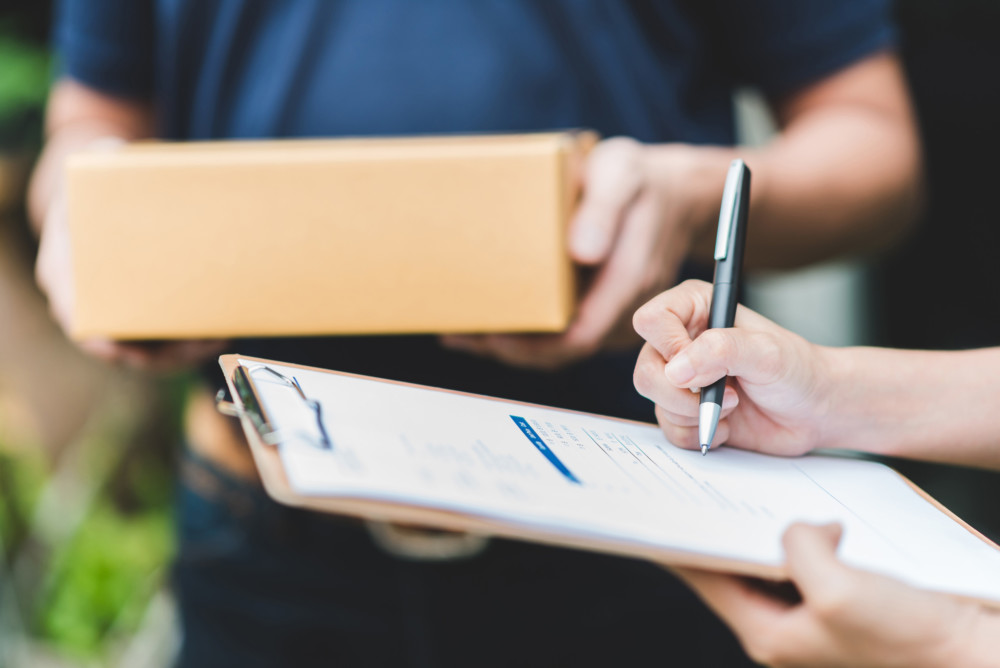By Ronald D. White
Los Angeles Times
WWR Article Summary (tl;dr) Anthony J. Dukes, professor of marketing at the USC Marshall School of Business says same day shipping was inevtiable “We can have food delivered instantly. We can stream programming instantly. That has given us higher expectations for retail.”
Los Angeles Times
This holiday season, as giant shipping operations once again struggle to handle the e-commerce explosion, some mall retailers have found a surprising way to compete: same-day delivery.
Last week, Target Corp. said it would pay $550 million for Shipt, a fast-growing firm based in Birmingham, Ala., that operates a $99-a-year grocery delivery service. In August, Target said it was buying Grand Junction, a San Francisco transportation technology company that connects retailers to a same-day delivery network of more than 700 drivers.
Best Buy this month expanded same-day delivery to 40 cities using Deliv, a crowd-sourced service based in Menlo Park, Calif.
“Same-day delivery is a service that our guests are asking for more and more often,” Target Chief Operating Officer John Mulligan said in an interview posted to the Minneapolis retailer’s website.
“By acquiring Shipt, we’ll be able to take advantage of our network of stores and Shipt’s technology platform and shopper community to quickly offer same-day delivery to millions of our guests,” Mulligan said.
Traditional retailers are trying to tap what some experts call the instant gratification economy.
“We can get our news instantly,” said Anthony J. Dukes, professor of marketing at the USC Marshall School of Business. “We can have food delivered instantly. We can stream programming instantly. That has given us higher expectations for retail.”
The catalyst may have come in February, when statistics showed that fast-delivery king Amazon.com accounted for more than half of all e-commerce growth in the previous 12 months, said Tushar Patel, chief marketing officer at Kibo, a Dallas-based company that helps merchants more closely tie their online and bricks-and-mortar operations, an effort known as “omnichannel” in the industry.
“That was a tipping point,” Patel said. “That was news to other retailers that they would have to constantly push the delivery envelope. Same day has become the new retail standard.”
Immediate gratification wasn’t always so important. Mail order catalogs came with the caveat “allow six weeks for delivery.”
But the time customers are willing to wait for satisfaction continues to shrink, from a week to two-day to overnight to same day. They also don’t want to pay for it.
“We have had studies that show 70 percent of consumers expect free shipping,” Patel said. An even higher percentage, he added, “said free shipping is compelling enough to make a purchase and not abandon a shopping cart.”
To do manage all that, Amazon’s competitors have “to play both sides of the aisle,” said management professor Jay Prag, by offering the rough equivalent of same-day shipping but with a little consumer effort: buy online, pick-up in store, or BOPIS in industry parlance. (There’s also BORIS, for buy online, return in store.)
“Target wants to be a hybrid,” said Prag, who teaches at Claremont Graduate University’s Drucker School of Management. “Have the fast delivery options but keep the brick-and-mortar presence.”
Los Angeles resident Danielle Kent, 23, said Amazon.com raised her expectations, with its quick delivery and ability to track shipments.
“Coming home from a long day of work and finding what you ordered that morning waiting for you on your door step when you get home, it’s almost like someone sent you a gift, even though you bought it yourself,” said Kent, an account coordinator for the Konnect Agency in Los Angeles.
Kent said she never felt as comfortable with smaller retailers “where you still have to wait weeks or it even sometimes gets lost in the mail.”
That type of feeling, and figuring out how to tap into it, was part of what drove Daphne Carmeli to create Deliv in 2012. Her quandary: how to jump onboard the fast delivery train without a massively expensive build-up in warehouses, vehicles and customer base.
Deliv borrows some of the philosophy behind Uber and Lyft by relying on a small army of independent contractor drivers using their own vehicles. Each has to first pass a background check and have a valid driver’s license and insurance.
“We all have a GPS source in our pockets with our smartphones,” Carmeli said, “so we can mobilize a group of drivers, know exactly where they are and who can get the job done first.”
Deliv now serves 4,000 merchants in 23 states, ranging from big players like Wal-Mart, Home Depot and Best Buy to small merchants.
“We are their same-day delivery option,” Carmeli said. “The shortest delivery window we will do is 45 minutes to an hour. We do returns as well.”
Claremont professor Prag said economies of scale matter greatly in the whether companies such as Target will succeed with high-speed delivery.
“This will work in Los Angeles, New York, Chicago, other big cities, where there is enough demand density to justify the delivery costs,” Prag said. “It won’t work in Oklahoma.”
Still, the hashtag #samedaydelivery has acquired a life of its own. Plug it into an Instagram search and nearly 58,000 shopping offers from around the world will show up, plugging the likes of high heel shoes from Nigeria and flowers from Dublin, all offering customers same-day delivery.
With mainstream delivery options UPS, FedEx and the U.S. Postal Service struggling to keep up with record online shopping, Kibo’s Patel said delivery services such as Shipt and Deliv will remain in high demand.
“Companies like Target don’t have a lot of confidence in the capacity of the traditional logistics providers,” Patel said. “They want to control their own destiny.”














































































































































































































































































































































































